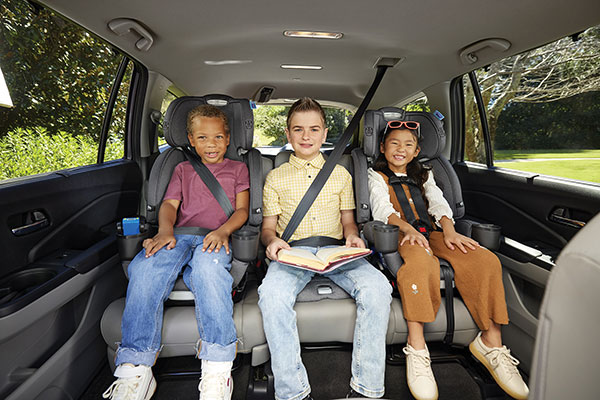(Family Features) As a parent, one of the most important purchases you’ll make for your child is a car seat. It’s important to choose a car seat that properly fits both your child and your car, as car crashes are a leading cause of death for children ages 12 and younger, according to the Centers for Disease Control and Prevention.
As your children grow, you’ll need to change the mode of their car seat to accommodate their weight and height. There are four recommended stages of child restraint usage: rear-facing harness, forward-facing harness, belt-positioning booster seat and seat belt. Different car seats offer different varieties of these modes of use, so families can choose a product that fits best with their child’s needs.
For example, the Graco 4Ever DLX Grad 5-in-1 Car Seat is a first-in-market seat that provides added longevity and value with its kid-centric design that accommodates children from 4-120 pounds and up to 12 years of age. The car seat features five modes of use to help children through each stage, including a rear-facing harness, forward-facing harness, both high-back and backless boosters and a removable seat belt trainer. Additional features include a space-saving slim design, SnugLock technology for quick and easy installation, a 10-position headrest and harness, removable inserts and rotating cupholders.
To help choose the right car seat for your child with safety top of mind, Graco curated a stage-by-stage guide to help meet first-time and growing family needs, following guidelines set by the American Academy of Pediatrics and the National Highway Traffic Safety Administration.
Stage 1: Rear-Facing Harness
 According to the American Academy of Pediatrics, children should remain in a rear-facing car seat in the vehicle backseat for as long as possible, until they reach the specified weight or height limit of the car seat for optimal protection while riding in the car.
According to the American Academy of Pediatrics, children should remain in a rear-facing car seat in the vehicle backseat for as long as possible, until they reach the specified weight or height limit of the car seat for optimal protection while riding in the car.
While many parents bring their children home from the hospital in an infant carrier, which is a portable seat with a stay-in-vehicle base, designed specifically for newborns and small babies, there are other rear-facing options. Convertibles and all-in-one seats have higher weight limits than infant carriers, allowing children to remain rear-facing up to 40-50 pounds.
Stage 2: Forward-Facing Harness
When children outgrow their rear-facing car seats, they should be buckled in a forward-facing car seat with a harness and top tether in the vehicle backseat until they reach the maximum height or weight for the seat, typically around age 5-6.
Stage 3: Belt-Positioning Booster Seats
Once children outgrow their forward-facing car seats with a harness, they should be buckled in a high-back belt-positioning booster seat (for children 40-100 pounds) to provide added neck and head support followed by a backless belt-positioning booster seat (for children 40-120 pounds) in the backseat until the vehicle seat belt fits properly across their laps and shoulders without a booster seat, which usually occurs between 9-12 years old.
Stage 4: Seat Belt
Approximately 31% of parents transition their children from a high-back booster directly to a vehicle seat belt, according to a survey fielded by Ipsos. To ride safely, many children need assistance with seat belt fit until age 8-12. The 4Ever DLX Grad 5-in-1 Car Seat features a removable Seat Belt Trainer that helps guide the seat belt into the correct position to help keep children safer for longer while still allowing them to feel like big kids.
Once the seat belt fits properly, children no longer need to use a booster seat. This means that they can sit all the way back against the vehicle seat with knees bent at the edge of the seat, the lap belt sitting low on their hips and upper thighs (not the stomach), the shoulder belt fitting across the collarbone and sitting flush with the torso – they can stay seated this way for the entire ride.
To learn more and find the right car seat for your child’s needs, visit gracobaby.com.
Source:







